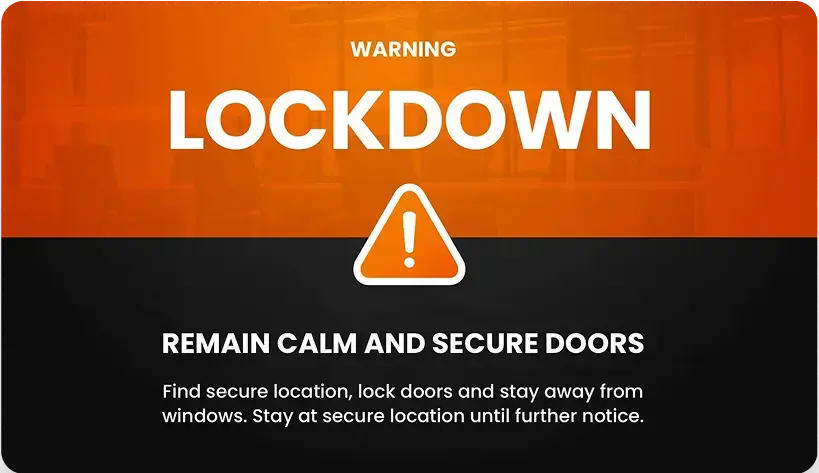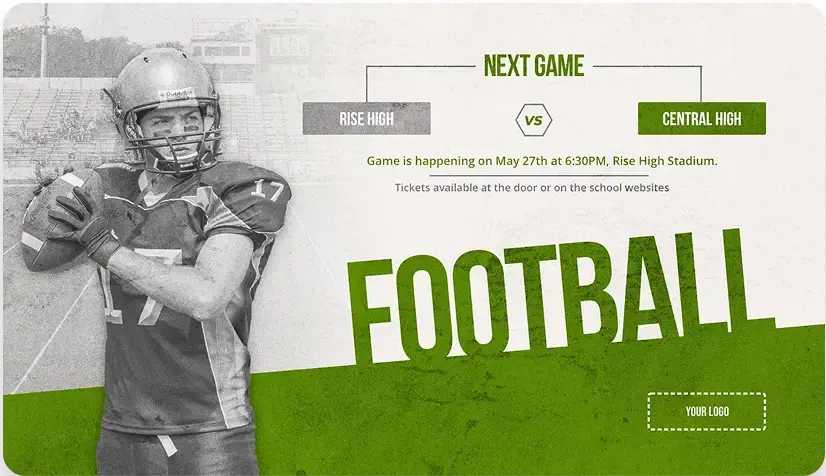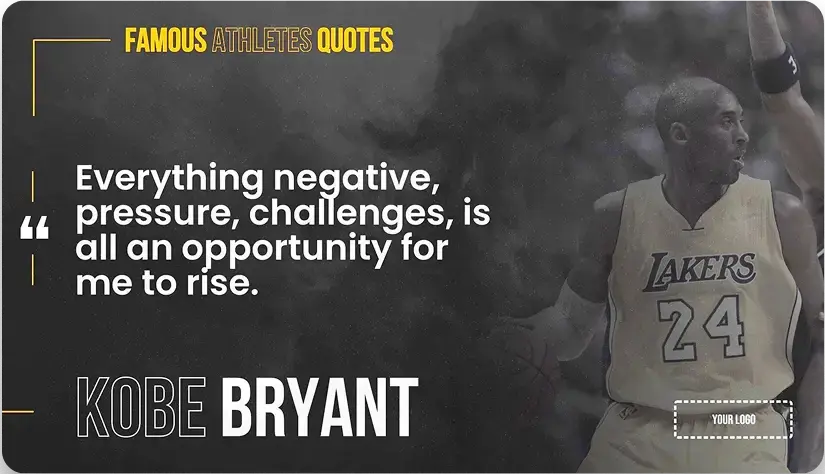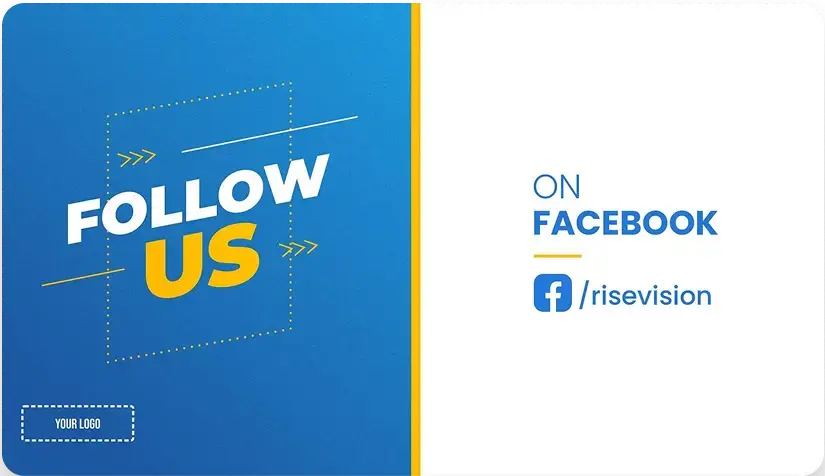Rise Vision & Windows Digital Signage Player
Windows-powered media players fit a wide array of digital signage applications—so you can create impactful communications, hardware flexibility, and enjoy the full benefits of Rise Vision’s solutions.

Benefits of Windows Media Player & Rise Vision
You can maximize the value of your Windows media player while enjoying the full benefits of Rise Vision’s solutions. Our software adapts to your environment, minimizing hardware investment while maximizing impact.
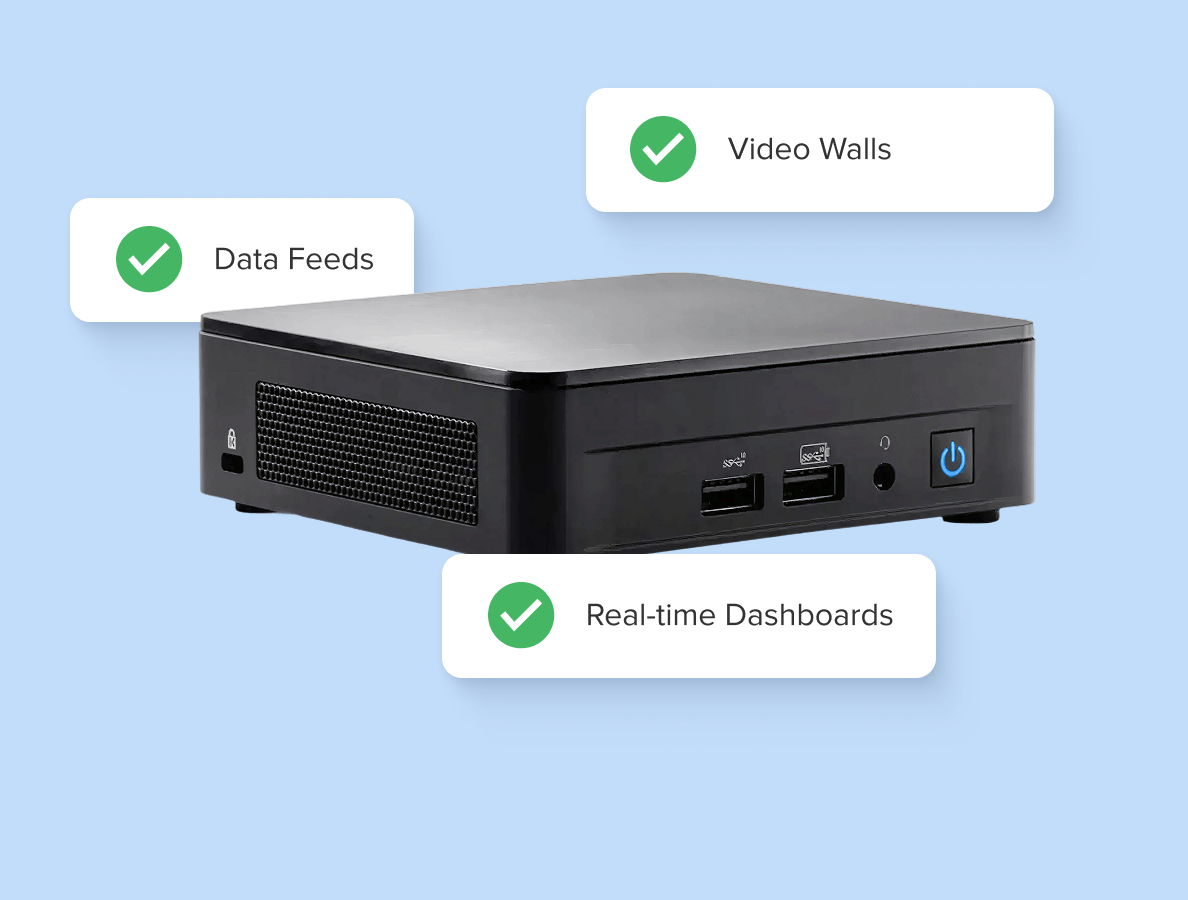
High Performance
Windows devices are known for their high processing capabilities, making them ideal for content-heavy signage like video walls, real-time dashboards, and data feeds.
Learn More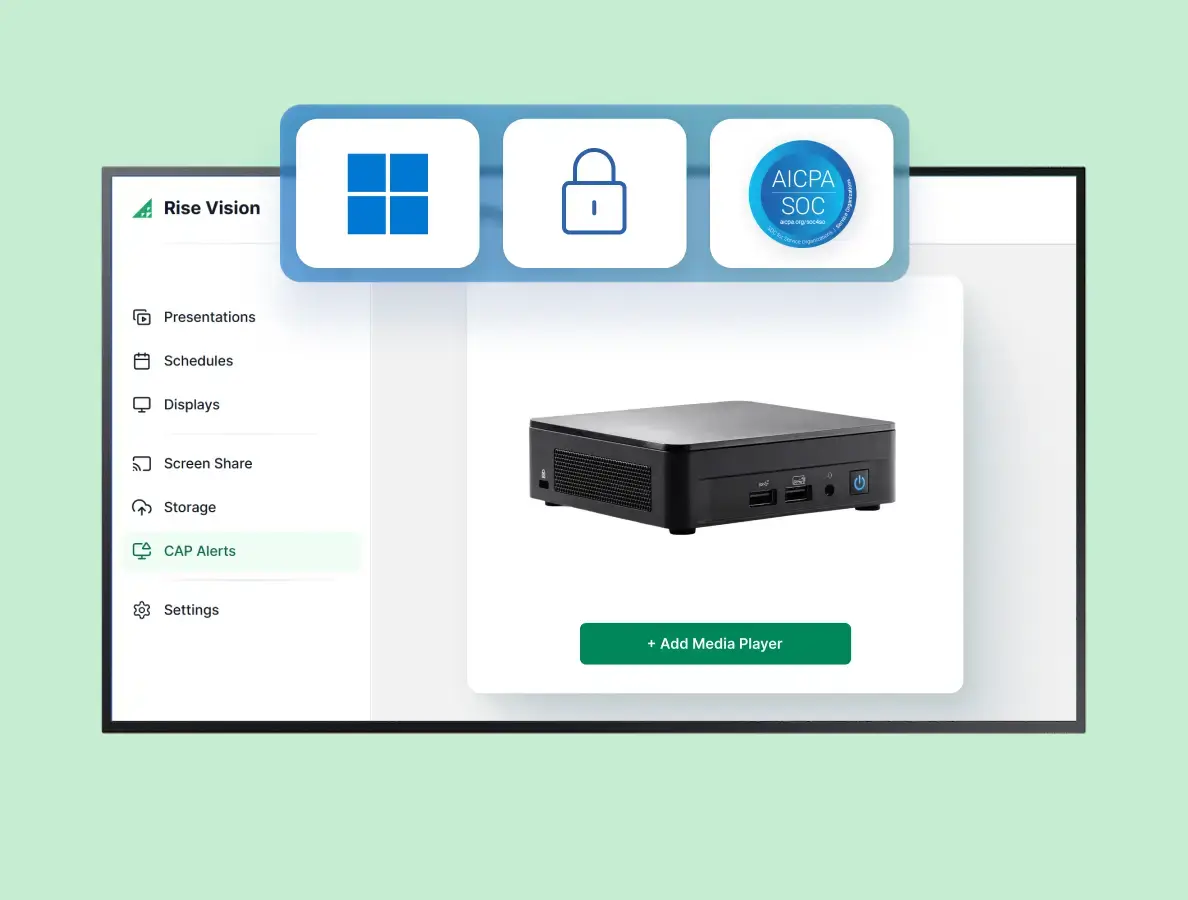
Enterprise-Ready Security
Windows digital signage media players are great for organizations that want to standardize operating systems and align with their IT security policies, especially when combined with Rise Vision’s secure infrastructure.
Learn More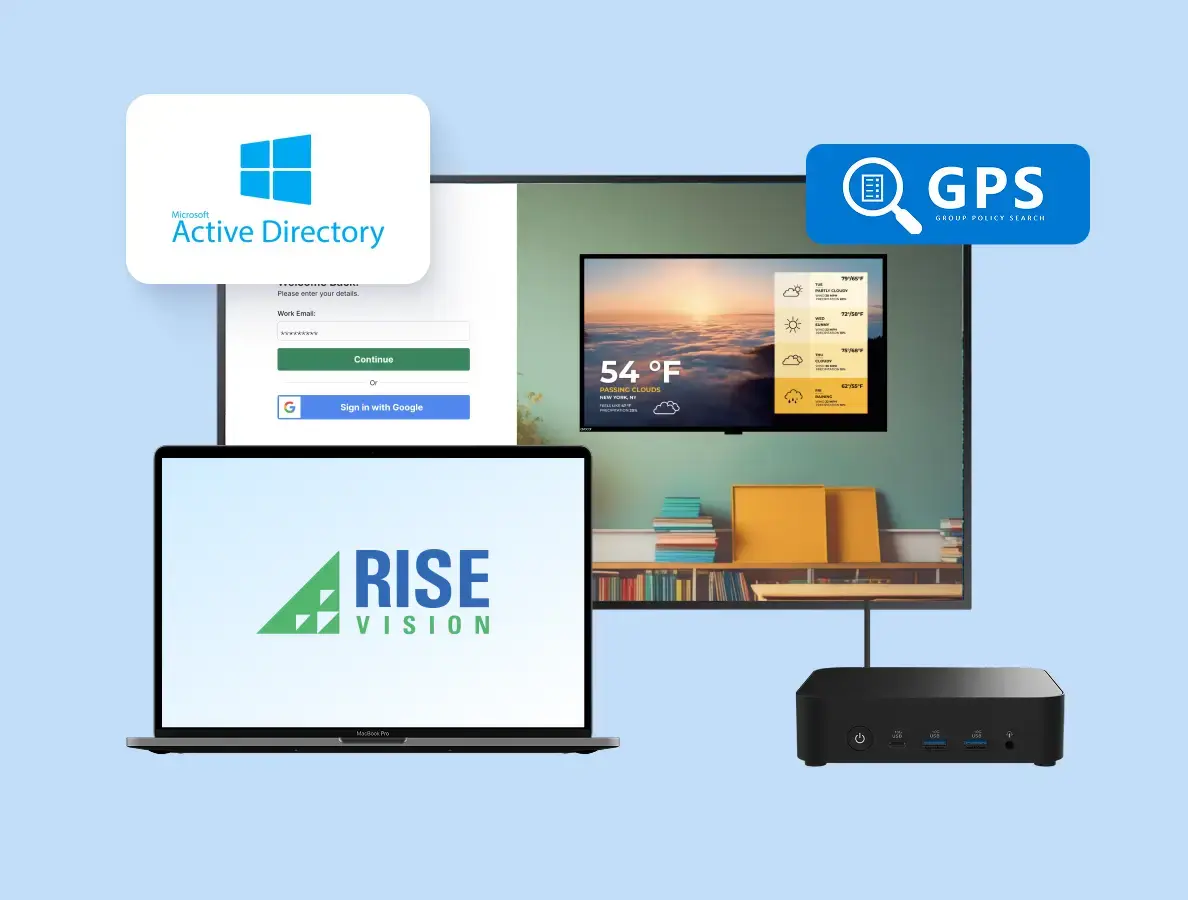
Seamless IT Management
Windows fits right into existing IT ecosystems, supporting Group Policy, Active Directory, and familiar remote management tools. That means faster setup and easier scaling.
Learn MoreWindows Digital Signage Hardware
Pair a Windows Media Player with Rise Vision
.webp?width=1188&height=900&name=Rise%20Vision%20ASUS%20NUC%20Celeron%20Media%20Player%20(Windows).webp)
Rise Vision ASUS NUC Celeron Media Player (Windows)
Our partner, The Book PC sells Windows media players that come with Rise Vision pre-installed. The Celeron Windows Media Player is a great device for the majority of digital signage use cases like showing videos, pictures, animations, and data at an affordable price point.
.webp?width=1188&height=900&name=Rise%20Vision%20ASUS%20NUC%20i3%20Media%20Player%20(Windows).webp)
Rise Vision ASUS NUC i3 Media Player (Windows)
Our partner, The Book PC sells Windows media players that come with Rise Vision pre-installed. The i3 Windows Media Player is a powerful device that can run demanding schedules full of presentations, videos, animation, and live data.


“Compared to many other digital signage platforms on the market, Rise Vision was an easy choice for us to make due to the cloud-based architecture, flexibility in being able to deploy on Windows, Linux, or Raspberry Pi, and a very low cost per display.”

Iain Brew / Production Manager at Macquarie University
How to Use Rise Vision & Windows Digital Signage Player
Easy-to-Use
Manage communications across your organization with our easy software and support for any hardware including Windows digital signage players.

Amazing Templates
Save hours of content creation time with 600+ templates, integrations, and weekly recommendations from Rise Vision’s software all using your familiar Windows media player.

Scalable and Secure
Rise Vision ensures reliable digital signage for Windows media players with high uptime, seamless multi-location management, and enterprise-grade security backed by our SOC 2 Type 2 Attestation.

Create Engaging Content with 600+ Customizable Templates
Save hours on content creation time every week using professionally designed, animated, and customizable templates. Easily create the content to engage the right audience at the right time for maximum impact.

-1.webp?width=521&height=435&name=image%20(2)-1.webp)
Industry Use Cases for Digital Signage Player Windows
K-12 Education

Industrial
Industrial facility IT staff and digital signage administrators are well-aquainted with Microsoft software and technology, making Windows digital signage players a go-to choice. Paired with Rise Vision’s enterprise-grade security, manufacturing facilities and logistics centers can securely screen share sensitive data in meeting rooms, display company KPIs, safety scoreboards, and more.

Higher Education
Pairing Rise Vision with Windows digital signage players allows universities and colleges to focus on impactful communication instead of complicated setup. As the best option for large-scale, multi-screen video walls, campus admins can launch large digital posters promoting athletic events, a dynamic alumni hall of fame, and more.

More Industries Using Windows Media Players
See other industries where Windows and Rise Vision pair together for impactful digital signage, screen sharing, and emergency alerts tailored to your organization’s needs.

Get Started with Rise Vision

Select your hardware
Choose the best hardware for your needs—use our recommended Avocor displays or media players, or bring your own hardware—like LED displays—and utilize Rise Vision’s software.

Set up your software
Create your Rise Vision account and customize your digital signage, screen sharing, and emergency alerts to push to even your largest DVLED displays.
Engage your audience
Push content to any LED display, set up your employees to screen share, and manage communication, collaboration, and safety across multiple locations with ease.
Schedule a Free Demo
You deserve the #1 all-in-one platform for digital signage, screen sharing, and emergency alerts.





Windows Media Player Frequently Asked Questions
Rise Vision recommends two reliable Windows-based media players:
- Rise Vision NUC i3 – A powerful option for demanding digital signage content, including HD video, data dashboards, and animations.
- Rise Vision NUC Celeron – A budget-friendly choice ideal for basic signage like image slideshows, announcements, and social media feeds.
Both devices come pre-configured with Windows 11 and are optimized for long-term digital signage performance.
There are four major downfalls to Windows digital signage players:
- High Licensing Costs: Windows licenses can cost $100-200+ per device— enterprise versions required for commercial use cost even more—making large deployments incredibly expensive.
- Automatic Updates: Windows updates—some requiring restarts—can occur unexpectedly, interrupting digital signage displays during business hours.
- System Instability: The infamous "Blue Screen of Death" can take displays offline unexpectedly.
- Large Attack Surface: Windows is a primary target for malware, viruses, and cyberattacks due to its popularity. Digital signage displays connected to networks are easy entry points for security breaches.
If you plan on doing interactive or touch screen digital signage, Windows is highly supportive of interactive displays. Simply put, the drivers that are required for interactive and touchscreen displays are easily found and installed using a Windows media player. At this point in time, no other media player operating systems support interactive digital signage as well as Microsoft, so if you require interactive video walls, wayfinding, or any other touchscreen or interactive digital signage capabilities—Windows is your best bet.
Why Choose Rise Vision
Trusted in over 100 countries, our all-in-one platform offers easy-to-use digital signage, seamless screen sharing, powerful emergency alerts, and support for a wide range of devices.
One Platform
One powerful platform designed to save you time and money, reduce complexity, and help you focus on what matters most: communicating with your audience, fostering collaboration, and creating a positive culture.
Easy-to-Use
Manage digital signage, screen sharing, and emergency alerts across your entire organization with our easy software and support for any hardware.
World-Class Service & Support
Get amazing technical support, free training, and guided implementation and onboarding from our knowledgeable team backed by a 99% satisfaction rating.







.png)




